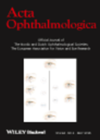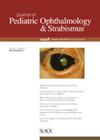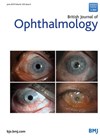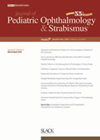You searched for "Trabeculectomy"
Update on primary angle closure glaucoma
1 June 2016
| Bheemanagouda Patil
|
EYE - Glaucoma
This review article considers primary angle-closure glaucoma which is responsible for half of glaucoma-related blindness worldwide. Angle closure is characterised by appositional contact between the iris and trabecular meshwork. It tends to develop in eyes with shallow anterior chambers, anteriorly...
Review of paediatric infectious endophthalmitis
This paper presents a review on paediatric infectious endophthalmitis and considers aetiology, prognosis and management. Classification included exogenous and endogenous. Diagnosis was based on presenting history, signs and symptoms, cultures and imaging. Exogenous cases included postoperative endophthalmitis (strabismus surgery, glaucoma...Lens surgery in patients with lens subluxation misdiagnosed as primary angle-closure glaucoma
1 August 2019
| Kurt Spiteri Cornish
|
EYE - Glaucoma
|
Angle-closure glaucoma, intraocular pressure control, lens subluxation, lens surgery, misdiagnosis
Lens subluxation can be caused by many conditions including Marfan syndrome and other hereditary conditions, and blunt trauma. Lens displacement can cause pupillary block and angle closure. This is commonly misdiagnosed as primary angle closure glaucoma (PACG), which can lead...
IOP in children with uveitis
1 August 2019
| Jonathan Chan
|
EYE - Vitreo-Retinal
This is a retrospective study of paediatric uveitis (<16-years-old) between July 2002 to June 2016 of a total of 320 children from a single centre: 17.2 % (55/320 patients) developed raised IOP requiring therapy; 11.5% of eyes required glaucoma surgery...
Childhood glaucoma outcomes and prognosis
This study aimed to evaluate the relationship between clinical characteristics and visual acuity in childhood glaucoma. The study included 45 eyes of 31 patients; 33.3% with primary childhood glaucoma and 66.7% with secondary glaucoma; 53.4% of secondary cases had glaucoma...High rate of conversion from ocular hypertension to glaucoma in subjects with uveitis
3 April 2023
| Jonathan Chan
|
EYE - Glaucoma
|
glaucoma, infection, inflammation, treatment medical, treatment surgery
This is a retrospective study from Auckland over a 10-year period. A total of 188 eyes of 139 subjects with either ocular hypertension (OH) or uveitic glaucoma (UG) were included for analysis with a mean follow up of 9.9 years....
High rate of conversion from ocular hypertension (OH) to glaucoma (UG) in subjects with uveitis
5 June 2023
| Jonathan Chan
|
EYE - Glaucoma
|
glaucoma, infection, inflammation, treatment medical, treatment surgery
This is a retrospective study from Auckland over a 10-year period including 188 eyes of 139 subjects with either OH or UG and were included for analysis with a mean follow-up of 9.9 years. The most common uveitis causes were...
End stage glaucoma management
1 August 2014
| Yajati K Ghosh
|
EYE - Glaucoma
A 48-year-old female has had multiple drug treatment for glaucoma and is still losing field of vision. How do you manage this over time? This patient is at high-risk for going blind and should be managed aggressively to protect remaining...
Improved efficacy expected with second-generation microinvasive glaucoma surgery (MIGS) devices
1 July 2015
| Rod McNeil
|
EYE - Glaucoma
Microinvasive surgical approaches to primary open-angle glaucoma (POAG) offer minimally traumatic options for effective intraocular pressure (IOP) reduction in appropriately selected glaucoma patients. Increases in laser trabeculoplasty rates and wider adoption of glaucoma drainage device filtration procedures, together with the...
Severe conjunctival cicatrisation secondary to chronic glaucoma therapy
1 August 2015
| Mrinal Rana, AK Negi
|
EYE - Cataract, EYE - Cornea, EYE - General, EYE - Glaucoma, EYE - Imaging, EYE - Neuro-ophthalmology, EYE - Oculoplastic, EYE - Oncology, EYE - Orbit, EYE - Paediatrics, EYE - Pathology, EYE - Refractive, EYE - Strabismus, EYE - Vitreo-Retinal
The timing of glaucoma filteration surgery during the course of chronic progressive glaucoma remains a contentious issue amongst glaucoma specialists. The vast majority support the use of maximal medical treatment initially to achieve the target pressure. Surgical procedures are only...
Ground-breaking achievements in blindness prevention
1 October 2019
|
EYE - General
One small UK based charity is enabling pioneering research to prevent blindness in low and lower middle income countries. The British Council for Prevention of Blindness (BCPB), established in 1976, funds innovative research and training which seeds the development of...
CALL TO ACTION: Ophthalmology on Myanmar / Thailand border: do you have any redundant kit?
29 June 2023
| Kate Claridge
|
EYE - General
In 1990, the late Doctor Frank Green, a consultant ophthalmologist in Aberdeen, along with Doctor Phillip Ambler, a GP with ophthalmic training, responded to an invitation to provide ophthalmic care for Karen refugees on the northern and eastern Myanmar borders....










